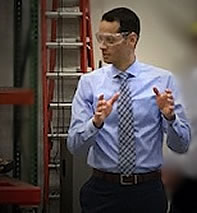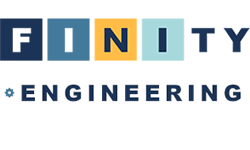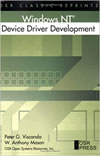 Khalid Sorensen, PhD, is a highly accomplished technology leader in Automation, Mechatronics, Motion Control, Manufacturing, Machine Vision, and Human-Machine Interaction. He has over 20 years of experience developing and deploying world-class mechatronic, motion control, and automation solutions.
Khalid Sorensen, PhD, is a highly accomplished technology leader in Automation, Mechatronics, Motion Control, Manufacturing, Machine Vision, and Human-Machine Interaction. He has over 20 years of experience developing and deploying world-class mechatronic, motion control, and automation solutions.
Dr. Sorensen has directed the development and implementation of 100s of complex, multi-disciplinary mechatronic systems for high-profile industry leaders including Toyota, Ford, Alcoa, Caterpillar, Boeing, NuScale, and many others, and high-profile facilities including Fukushima and Chernobyl.
Litigation Support - Dr. Sorensen has testified in numerous Product Liability and IP disputes – both at the Federal and District court levels, as well as the ITC, USPTO, and US Customs and Border Protection.
Areas of Expertise:
- Automation
- Dynamics and Control Systems
- Kinematics
- Machine Vision
- Manufacturing
- Mechatronics
- Photogrammetry
- Robotics
| - Segways
- Sensors
- Tire Mechanics
- Traction Control
- Wheel Slip
- Vibrations
- Warnings
- See Full List
|
Career Highlights:
- Founded a technology company where he invented and was the Chief Architect of ExpertoperatorTM, SafemoveTM, AutomoveTM, and CranevisionTM – technology known within the primary metals, automotive, and heavy-equipment sectors for enhancing crane safety, productivity, and ease-of-use; Developed state-of-the-art, on-line, time-optimal trajectory synthesis software for Cartesian machines - key drivers in the acquisition of his company 5 years after inception by a global leader in automation.
- Served as CTO at PaR Systems, a world-class supplier of large-scale robotic automation, control, advanced manufacturing, and nuclear-handling solutions.
- Founded Finity Engineering, which provides design, analysis, consulting, and litigation support services in the areas of robotics, automation, and mechatronics.
- Adjunct Associate Professor of Mechanical Engineering at Georgia Tech. Teaches various engineering topics including Dynamics, Controls, Vibrations, Mechatronics, the Design Process, Product Development, Engineering IP, Product Liability, and others.
- Invited talks at premiere institutions globally including MIT, Kumoh National Univ. of Tech, Korea Atomic Energy Research Inst., Hyung Hee Univ., Huazhong Univ. of Science & Tech.
View Finity Engineering's Business Consulting Profile.









 Khalid Sorensen, PhD, is a highly accomplished technology leader in Automation, Mechatronics, Motion Control, Manufacturing, Machine Vision, and Human-Machine Interaction. He has over 20 years of experience developing and deploying world-class mechatronic, motion control, and automation solutions.
Khalid Sorensen, PhD, is a highly accomplished technology leader in Automation, Mechatronics, Motion Control, Manufacturing, Machine Vision, and Human-Machine Interaction. He has over 20 years of experience developing and deploying world-class mechatronic, motion control, and automation solutions.

